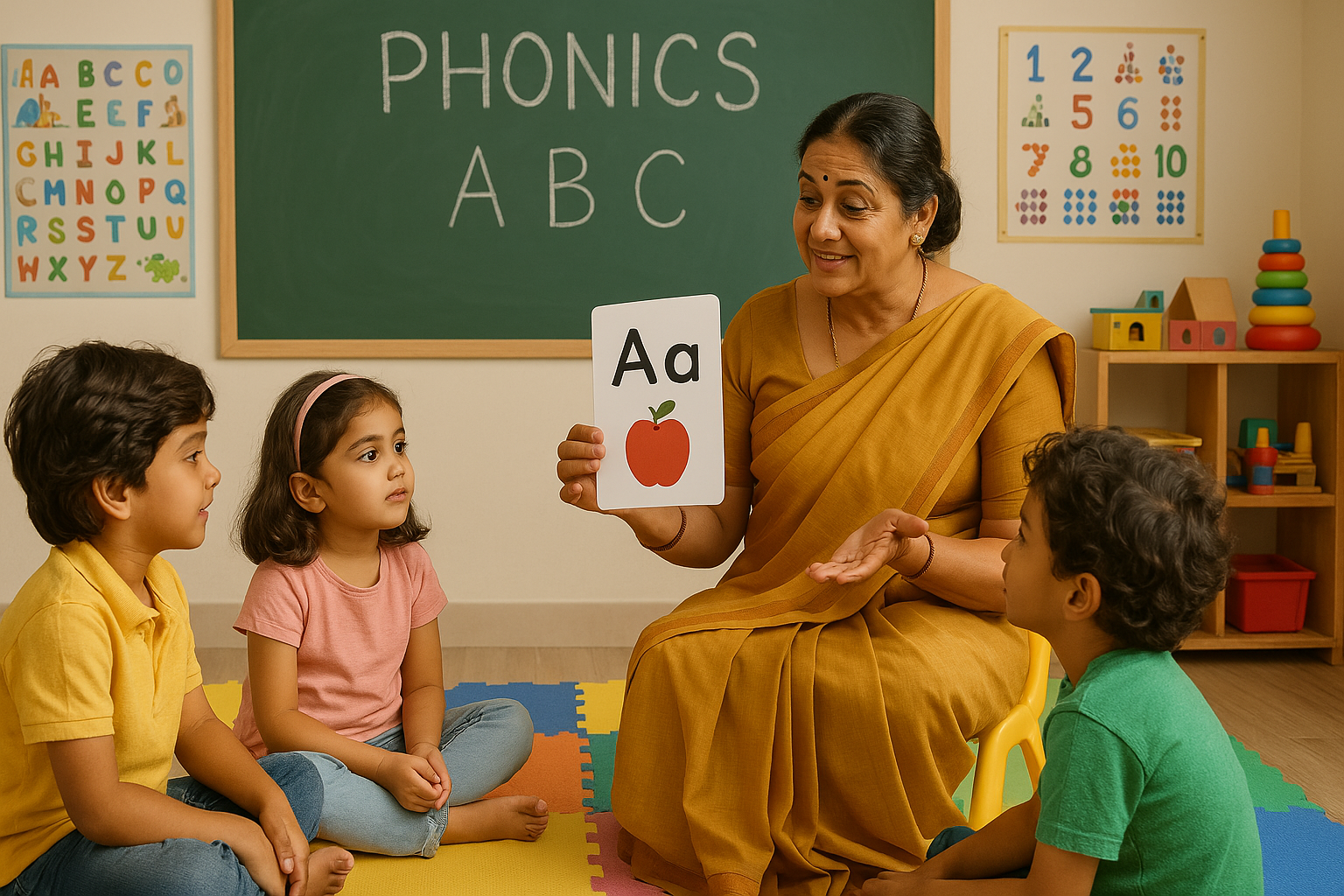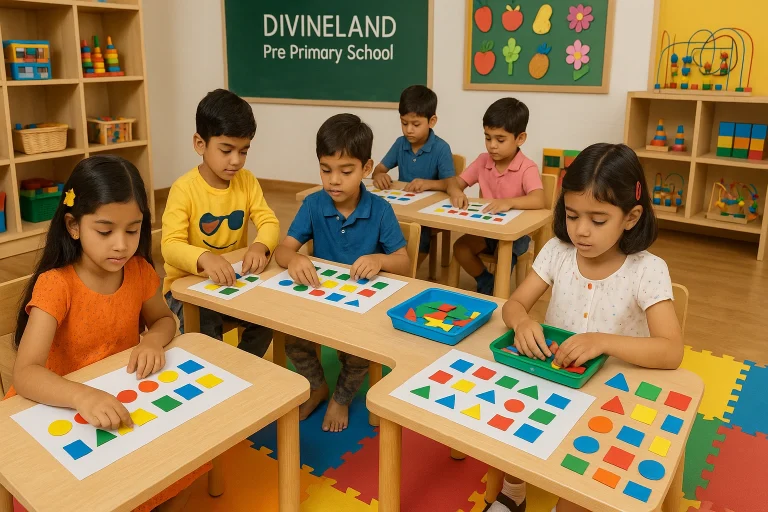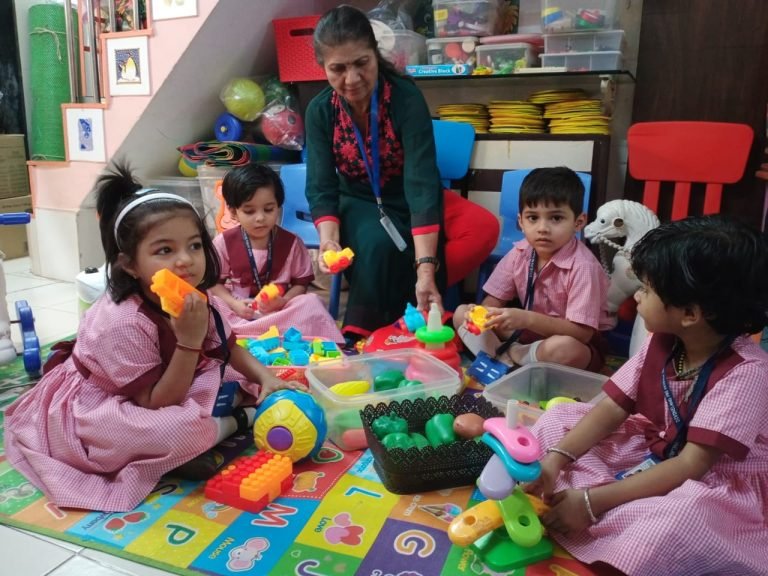
Reading instruction starts with learning how letters and sounds go together. Preschool instruction of phonics is the building block to good reading and writing ability. With a little song, a story, and some letter games, learning phonics can be an enjoyable, intuitive part of early learning. With proper teaching, phonics instruction can assist young children in developing confidence when they begin to read words and comprehend written words.
Fun Ways to Teach Phonics
Teaching Phonics is one of the most crucial steps in assisting preschoolers with learning to read. When phonics is taught in a fun and playful manner, children learn faster and become more interested in acquiring the skills. Teaching phonics does not have to be mundane and repetitive. Using the right activities, it becomes a natural aspect of a child’s daily life.
These are some popular and engaging ways to turn teaching phonics into a happy experience for preschoolers.
Sing Songs with Letter Sounds
Kids enjoy music, and songs are a great way to teach letter sounds. Phonics songs instruct children on how each letter sounds, usually with memorable melodies and repetition. Children are able to recall sounds more easily with phonics songs and enjoy learning. Daily singing enhances the relationship between sounds and letters in a relaxing way.
Play Letter Sound Games
Interactive games are an enjoyable way to engage children. You can have children play games such as “I Spy” through sounds, for instance, “I spy something that begins with /b/.” This makes children listen for sounds and associate them with objects in the environment. Such games continue to make learning phonics enjoyable and enhance effective listening skills.
Use Flashcards with Pictures
Large-letter, picture-filled flashcards assist preschoolers in recognizing both the sound of and the letter itself. A card with “B” and an image of a ball assists in linking the letter to the /b/ sound. Review several flashcards a day and have the child pronounce the sound. Repetition frequently assists in reinforcing letter-sound connections.
Make Sensory Letter Activities
Preschoolers enjoy using their hands. Allow them to practice tracing letters in sand, rice, or playdough. You may also use tactile materials such as felt or sandpaper to create letters. These activities engage children in teaching phonics through the addition of touch and vision plus hearing. When more than one sense is used, children are better at remembering.
Read Alphabet Books Aloud
Alphabet Books narrate brief stories about every letter, usually with words that rhyme and replicate letter sounds. When adults read it aloud and highlight the sounds, then it is a fun experience to listen to how phonics gets applied in real life. Point at letters while reading, and ask children to echo sounds back to you.
Match Letters with Objects
This activity is about matching letter cards to things in the house or room. For instance, match the letter “C” to a cup. It makes kids relate phonics to actual objects, making learning more relevant. It’s also a useful means of enhancing vocabulary when teaching phonics.
Employ Storytelling with Sound Emphasis
Select simple stories and emphasize a single sound at a time. As an example, read a story and underscore all the words that start with the /s/ sound. Ask the child to say these words again or locate them in the pictures. This integrates teaching phonics into story time and enhances sound awareness.
Interactive Alphabet Puzzles
Alphabet puzzles with pictures and letters help children build connections between the visual letter and its sound. As they fit pieces together, they can say the sound aloud. This hands-on method of teaching phonics supports fine motor skills and early reading habits at the same time.
Teaching phonics to preschoolers is a lot more effective if it’s made into play. Through music, movement, stories, and games, children remain engaged while developing the building blocks of reading. When phonics is made enjoyable, it makes for a solid and long-term foundation for language acquisition.
Call or Whatsapp on +918591021373 / +919082778593, for details of Divineland’s Phonics Classes!
For downloading the brochure of Divineland’s Phonics Classes, Click Here!

Phonics Tips for Preschoolers
Teaching phonics to preschool children is a key step towards enabling them to grasp how written words function. Children are, at this point, starting to link sounds with letters. A light-hearted and fun method of teaching phonics can go a long way in their future reading and writing capabilities. Presented below are handy and valuable tips that make teaching phonics fun and age-friendly for young children.
These are some easy steps to facilitate teaching phonics in a preschool environment:
Begin with Letter Sounds, Not Their Names
Begin with the sounds that each letter produces and then introduce their names. For instance, pronounce /b/ for the letter “B” rather than using the term “bee.” This is easier for the children to use later when they read words.
Use Repetition Through Songs and Rhymes
Rhymes and songs with repetition are useful for teaching children about the sound of letters. These also aid in rhythm, listening, and pronunciations—all of which aid in teaching phonics in an engaging manner.
Teach Letters Individually
Don’t give too many letters to children at a time. Choose one or two letters per week and play with their sounds in various words. Add pictures, stories, or toys that represent the sound of the letter to help learning take hold.
Utilize Multi-Sensory Activities
Allow preschoolers to trace letters in sand, mold them in clay, or draw them in the air. Active involvement of more than one sense strengthens memory and concentration and makes learning about phonics fun.
Play Sound-Matching Games
Play games using common items to assist children in detecting initial sounds. For instance, use a ball and banana to assist them in identifying the /b/ sound. Such games hone listening and comparison skills.
Blend Simple Sounds into Words
After acquiring a few letter sounds, begin practicing blending them into short words such as “cat,” “sun,” or “hat.” Do it little by little and repeat frequently in order to gain confidence.
Make Reading a Shared Activity
Read easy books together and touch the hand to each word while reading. Emphasize the sounds within the words and encourage children to repeat them. This brings phonics into real reading contexts.
Celebrate Small Wins
Encouragement is vital. Each time a child recognizes a sound or sound-blends a word, be enthusiastic. Small celebrations keep kids engaged and passionate about teaching phonics.
Maintaining it light and routine is the optimum way to instruct preschoolers in phonics. Using the proper combination of activities and patience, youngsters will automatically link letters to sounds. These initial steps create the building blocks for a lifetime of successful reading.
Establishing sound phonics skills in early childhood provides the groundwork for a lifetime of successful reading. At Divineland Pre Primary School, our phonics lessons are set up to make learning fun, efficient, and suitable for young children. With effective strategies and experienced teachers, we assist children in linking sounds to letters using enjoyable and systematic ways. If you would like to provide a support to your child’s early literacy, the time is right now to look into Divineland’s phonics lessons. Provide your child with the correct beginning in reading today.
Boost your child’s reading skills—enroll in Divineland’s phonics classes today!
Call or Whatsapp on +918591021373 / +919082778593, for details of Divineland’s Phonics Classes!
For downloading the brochure of Divineland’s Phonics Classes, Click Here!
FAQs
What is Phonics in Preschool Learning?
Phonics is that learning how the letters and sounds go together, and thus enable them to read and write confidently at an early age.
When should Phonics be Introduced to Preschoolers?
Phonics may begin at 3–4 years of age through enjoyable songs, rhyming and letter-sound games that are suited to a child's interests and readiness.
How do I Make Phonics Engaging for Preschool Children?
Maintain phonics as a fun, developmentally friendly activity by employing songs, storybooks, picture cards, and hands-on activities.


